Physical Address
304 North Cardinal St.
Dorchester Center, MA 02124
Physical Address
304 North Cardinal St.
Dorchester Center, MA 02124
Your travel dreams are closer to reality than you might think. Most people believe bucket list destinations are out of reach, but research shows travelers hope to visit just seven locations in their lifetime. The average bucket list contains only 11 places.
A survey of 1.5 million travelers reveals that iconic cities make up 52% of the most desired bucket list destinations, and white sandy beaches account for 22%. The timeless romance of Paris and Cape Town’s vibrant Bo Kaap neighborhood attract travelers significantly. Instagram research shows 33% of travelers are drawn to Bo Kaap’s colorful charm. These cities blend classic dream destinations with unexpected treasures. The list includes everything from Dubai’s bold architecture to Bali’s tropical paradise, and we’ve selected 15 remarkable cities that should be on your 2025 travel radar.

Paris fascinates visitors with its hidden artistic quarters and eco-friendly initiatives beyond its iconic landmarks. The city’s steadfast dedication to responsible tourism has helped it climb global rankings remarkably, moving from 55th to 21st place with an 80.12% completion of sustainability criteria.
Street art comes alive in the 13th arrondissement, which serves as proof of state-of-the-art urban expression. You’ll find impressive murals from prominent artists like Miss Tic, Obey, C215, and Seth. The art nouveau architectural movement shaped the 16th arrondissement’s character through Jules Lavirotte and Hector Guimard’s distinctive designs. The Castel Béranger at 12/14 Rue Jean de la Fontaine stands as a perfect example of this artistic heritage.
La Grande Epicerie de Paris brings the city’s culinary scene to life with nearly 3,000 square meters of retail space and 25,000 products. The Marché des Enfants Rouges, 400 years old, creates a vibrant atmosphere where you can find North African grains and Italian specialties. The Federation Française de l’Aperitif provides a genuine taste of local craft beer, cured sausages, and artisanal cheeses.
Basilique du Sacré-Coeur rewards visitors with panoramic 360-degree views that become magical at sunset. The Latin Quarter’s cobbled streets along Rue de la Bûcherie and Rue Saint-Séverin let street photography enthusiasts capture traditional crêperies and authentic street scenes. Montmartre’s La Maison Rose café creates striking photos with its pink exterior against the neighborhood’s white and gray architecture.
Paris has taken major steps toward environmental responsibility by implementing over 70 collective commitments for sustainable tourism. The city prioritizes three areas: enhancing visitor experiences, creating positive environmental effects, and building resilience. Paris works with eight French destinations through the “GDS Movement” to share practices and training that promote responsible tourism.
Local establishments have embraced this change completely. Hotels now use eco-friendly practices such as sustainable water management and energy-efficient LED lighting systems. The city encourages visitors to use electric bikes and public transportation to reduce their environmental footprint while they explore Paris’s hidden gems.
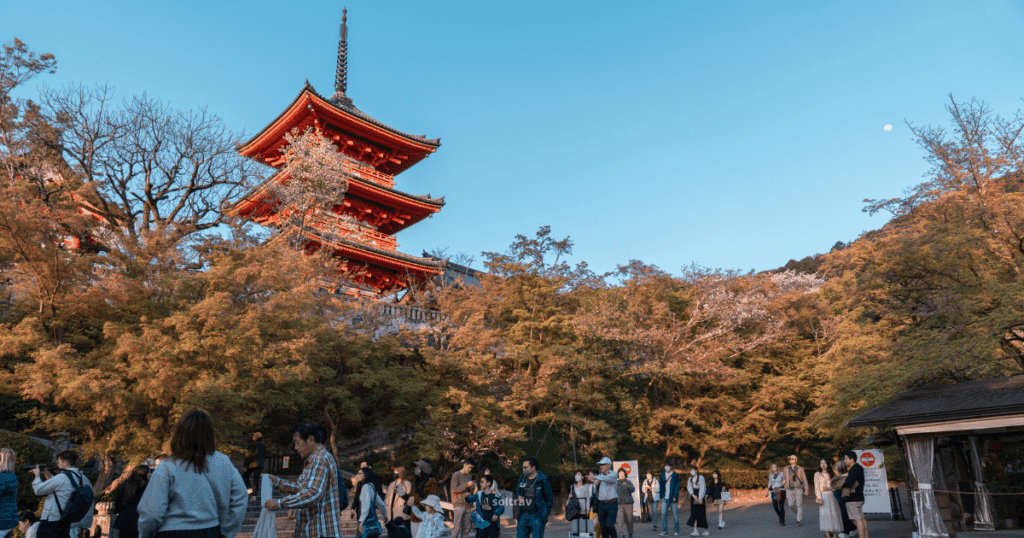
Kyoto, Japan’s cultural heart, naturally combines ancient traditions with modern life. The city houses over 2,000 Buddhist temples and Shinto shrines, each with its own historical significance.
Kyoto’s preserved heritage lives on in the Higashiyama district through its narrow lanes and traditional wooden buildings that offer glimpses into old Japan. Monks in flowing robes perform ceremonies and maintain age-old traditions in the district’s temples, which remain active centers of spiritual practice.
Japanese tea ceremonies have their spiritual home in Kyoto, where the practice evolved to its current ritualized form in the 16th century. The city features three main tea ceremony schools, and venues like Camellia and En provide authentic experiences. Visitors at Camellia, near Kiyomizu-dera Temple, learn the ceremony’s essence from bilingual instructor Atsuko Mori. Four key principles shape this practice: harmony, respect, purity, and silence (wa-kei-sei-jaku).
Pink blossoms transform the city between late March and early April. Maruyama Park, Kyoto’s oldest public space, showcases a magnificent weeping cherry tree that glows each evening. Hundreds of cherry trees line the Philosopher’s Path between Ginkakuji and Nanzenji, creating perfect photo opportunities. Gion district’s Shinbashi-dori creates an enchanting evening scene with lantern-lit cherry blossoms against traditional houses.
Kyoto’s craftsmanship spans 74 traditional industries, from nishijin-ori silk weaving to kyo-shikki lacquerware. Visitors can join hands-on workshops in private studios through organizations like Kyoto Artisans Concierge and learn directly from master craftspeople. Young artisans from all over Japan come to Kyoto to study under experienced masters, helping preserve ancient techniques while adapting them to modern esthetics.
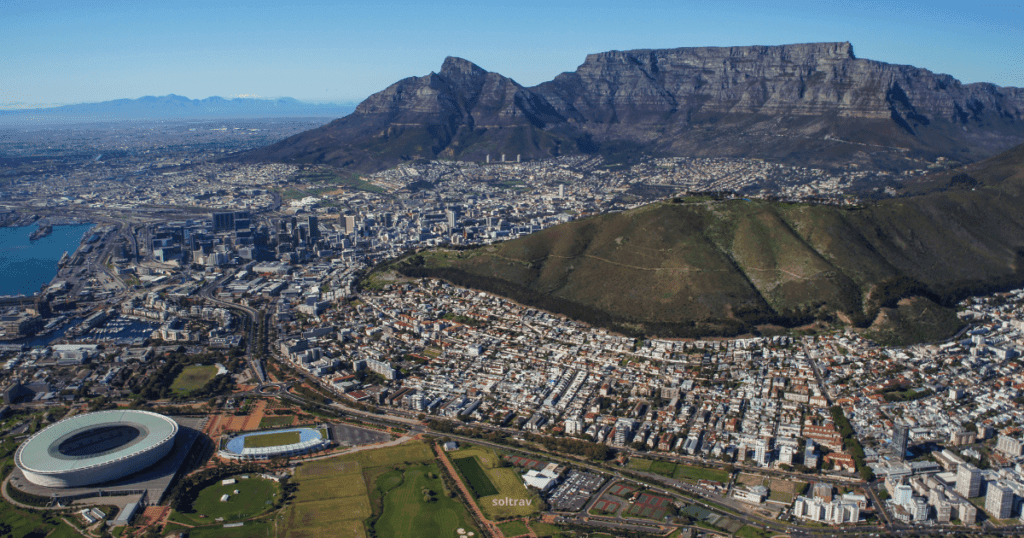
Cape Town sits between mountains and ocean, showing nature’s grandeur in an urban setting. The city’s crown jewel, Table Mountain National Park, stretches an impressive 22,000 hectares from Cape Town to Cape of Good Hope.
The mountain has several trails for different hiking experiences. Agama Walk rewards hikers with 360-degree views of Cape Town that you can complete in 30 minutes. Platteklip Gorge gives beginners a straightforward route with well-laid-out switchbacks and staircases. Most people finish this trail in about 1.5-2 hours. The relaxed Pipe Track stretches 6km through spectacular landscapes.
The city’s food scene shows its rich heritage through carefully planned food experiences. Local guides walk you through iconic neighborhoods and connect you with Cape Town’s varied flavors and cultural stories. These tours stop at hidden gems and local spots that give you real experiences away from tourist areas.
The coastline features many Blue Flag beaches that meet strict environmental standards. Each of Clifton’s four beaches has something special. Clifton 1st welcomes families while Clifton 2nd gives you peaceful moments with Lion’s Head views. Camps Bay Beach ranks among the world’s top 20 beaches and blends luxury with natural beauty.
The Maboneng Township Arts Experience has turned Langa, Cape Town’s oldest township, into a creative hub. This project has turned over 50 homes into galleries that showcase more than 40 artists. Artists like Velile Soha display their work in home galleries where visitors learn about township life and culture up close. Art tours help visitors understand local life while supporting community artists.

Built upon 118 small islands with 400 bridges connecting them, Venice shows human ingenuity and architectural brilliance at its best. This floating city’s streets become waterways that blend history, art, and amazing food together.
Venice’s extensive bridge network features the unique Ponte De Chiodo that stands out because it has no sides – giving us a rare look at the city’s historical architecture. The maze-like Cannaregio district lets visitors find quiet footbridges over small canals away from the busy tourist spots. The spot where Calle dei Meloni meets Calle del Mezo creates a perfect photo opportunity.
Traditional dishes showcase Venice’s food heritage. Bigoli in salsa, a whole-wheat pasta with salt-cured fish sauce, started as a simple peasant dish in the 16th century. Risi e bisi, a special risotto with peas and pancetta, has royal roots – the Doges of Venice ate it on Saint Mark’s Day. The city’s bacari (traditional wine bars) serve cichèti – small plates that have grown into their own culture with everything from fried meatballs to cold cuts.
Skilled craftspeople keep Venice’s artistic legacy alive. The Valese Foundry, 110 years old, stands as the last foundry that makes mythological figures in brass using traditional sand casting. Federico and Isabella work in hidden workshops to preserve the ancient Turkish art of marbled paper by teaching others this centuries-old craft. Martina Vidal keeps Burano’s famous lace-making tradition going strong since 1900.
The Scala Contarini del Bovolo’s unique spiral staircase gives amazing 360-degree views of the city. Ponte dell’Accademia lets you capture gondolas gliding next to wooden water taxis with St Maria of Salute Basilica creating a stunning backdrop. Getting to these spots before 7:00 AM helps you take photos without tourist crowds.
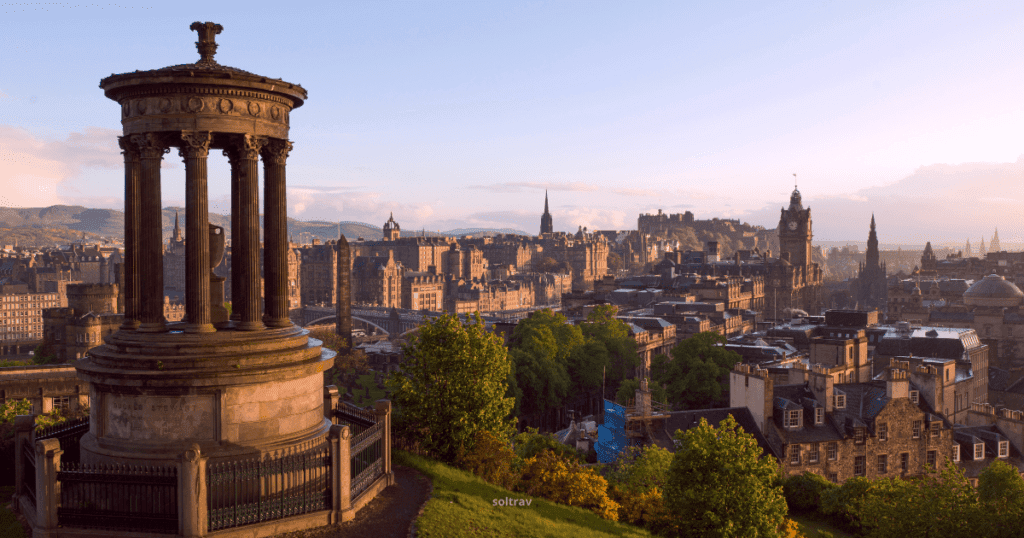
Edinburgh Castle sits majestically on top of an extinct volcano and dominates the city’s skyline as Scotland’s most famous fortress. This architectural marvel has endured 23 attempts of capture since the 12th century and earned its place as Britain’s most besieged location.
The Royal Mile connects Edinburgh Castle to Holyrood Palace and shows centuries of Scottish heritage. The castle’s entrance features the Esplanade, a solemn reminder of history with memorials dedicated to 300 women who were executed as witches between the 15th and 18th centuries. The Great Hall displays an impressive collection of arms and armor, while Scotland’s precious Crown Jewels rest safely in the Crown Room.
Edinburgh proudly stands as UNESCO’s first City of Literature, where streets resonate with literary genius. Three giants of Scottish literature come alive in the Writers’ Museum through their personal items: Burns’ writing desk, Scott’s first edition of Waverley, and Stevenson’s beloved rocking horse. The Oxford Bar on Young Street remains famous as the favorite haunt of Detective Inspector Rebus, a character created by Edinburgh’s own Sir Ian Rankin.
The city’s historic pubs serve as living museums of Scottish culture. Edinburgh’s oldest pub, The Sheep Heid Inn, traces its roots back to the 14th century. The White Hart Inn carries over 500 years of history and once welcomed Scotland’s national poet, Robert Burns, in the late 1700s. These establishments keep their traditional charm alive through folk music sessions and authentic Scottish hospitality.
Edinburgh becomes a cultural hub year-round with its world-renowned events. The Edinburgh Festival Fringe, running from August 1-25, 2025, stands out as one of the world’s greatest arts celebrations. Spectacular performances light up the Royal Edinburgh Military Tattoo (August 1-23, 2025) and Edinburgh International Festival (August 1-24, 2025). The Edinburgh Jazz and Blues Festival (July 11-20, 2025) brings talented musicians from around the world together.
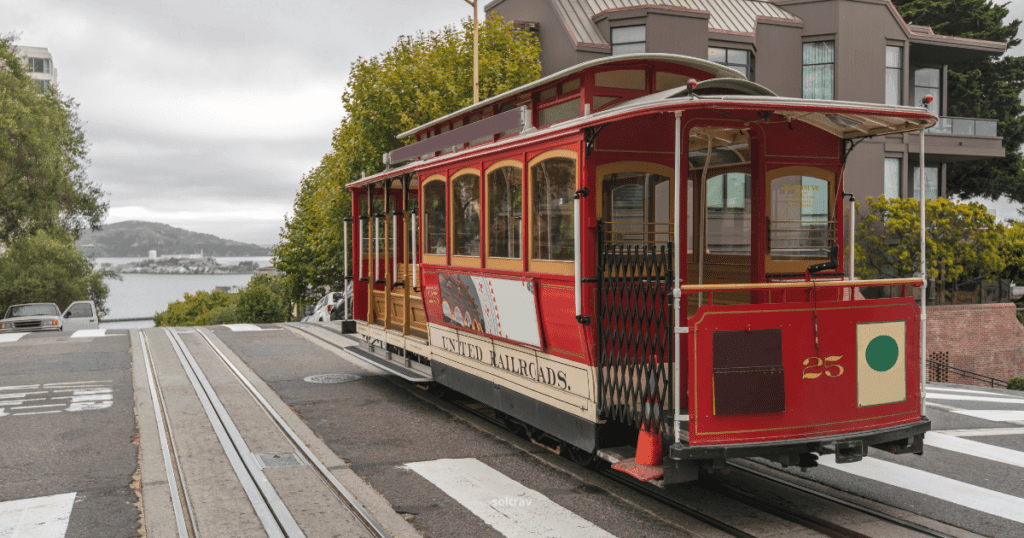
The Golden City sits between the Pacific Ocean and San Francisco Bay. Travelers come here for its breathtaking views and rich architectural heritage. This lively city packs countless must-see spots within its 49 square miles.
Tank Hill stands as a local treasure beyond the tourist-packed Twin Peaks. It gives you sweeping views of the ocean, Golden Gate Park, and the iconic Golden Gate Bridge. Battery Spencer provides unmatched bridge views that create perfect photo spots. Ina Coolbrith Park shows off spectacular downtown San Francisco views, made even better when California poppies bloom in spring.
The city’s food world shines with 39 Michelin stars spread across 28 restaurants. La Taqueria serves its famous rice-free burritos, while North Beach houses century-old establishments. America’s oldest Chinatown features traditional spots like Golden Gate Bakery with its sought-after egg tarts. You’ll also find modern gems like the Michelin-starred Mister Jiu’s.
San Francisco’s buildings showcase styles from Victorian to mid-century modern. The Neo-Futurist Hyatt Regency Embarcadero lobby amazes visitors with its dramatic interior, soaring atriums, and stacked balconies. San Francisco City Hall ranks among the nation’s most luminous historic buildings, showing how civic architecture serves democracy.
Each district has its own unique character. The Mission District comes alive with colorful street art and popular eateries. North Beach’s narrow lanes echo its waterfront bohemian past while housing modern restaurants. Hayes Valley draws visitors with its sophisticated shops and upscale eateries. The Marina district rounds things out with beautiful waterfront views and a buzzing nightlife.
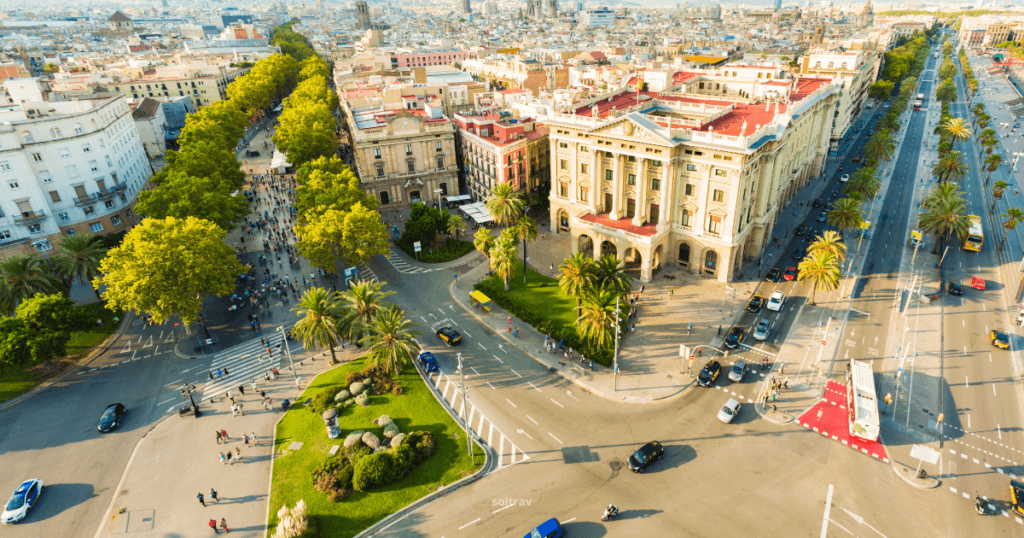
Barcelona has become an open-air museum thanks to Antoni Gaudí’s architectural brilliance. His distinctive style appears in four of the city’s top 10 attractions. He created his unique style by looking at natural forms instead of following other architects of his time. This approach led to an unmatched legacy that defines Barcelona’s character today.
Gaudí’s masterpieces show his love for nature through curved stones, twisted iron work, and organic shapes. Casa Batlló shows this vision perfectly with its skull-shaped balconies and bone-like window frames. The building walls sparkle with bright coral-colored mosaics. The Sagrada Familia basilica remains his greatest work even unfinished. It pulls in millions of people each year as Barcelona’s most visited attraction.
La Boqueria stands as Spain’s largest food market and gives visitors a true taste of local culture. The historic halls let people find local specialties next to fresh produce. This creates a rich experience of Catalan food culture. Visitors can learn about Barcelona’s food heritage through 30-40 minute guided tours.
The 1992 Olympics changed Barcelona’s connection to the Mediterranean sea. A major urban makeover reshaped the entire coastline. Barcelona’s beaches now serve as lively community spaces. People enjoy water sports and beachfront amenities here. The urban beach stretches 4.5 kilometers and has available facilities, Wi-Fi, and many beachside spots.
Poble Sec has grown into a food lover’s paradise where old bodegas mix with modern fusion restaurants. Local experts take guests to hidden spots and authentic eating places that show Barcelona’s food influences. Guests usually stop at two different tapas bars. Each place serves its own take on classic Spanish small plates. People can try cold pinchos laid out on the bar and hot tapas fresh from the kitchen.
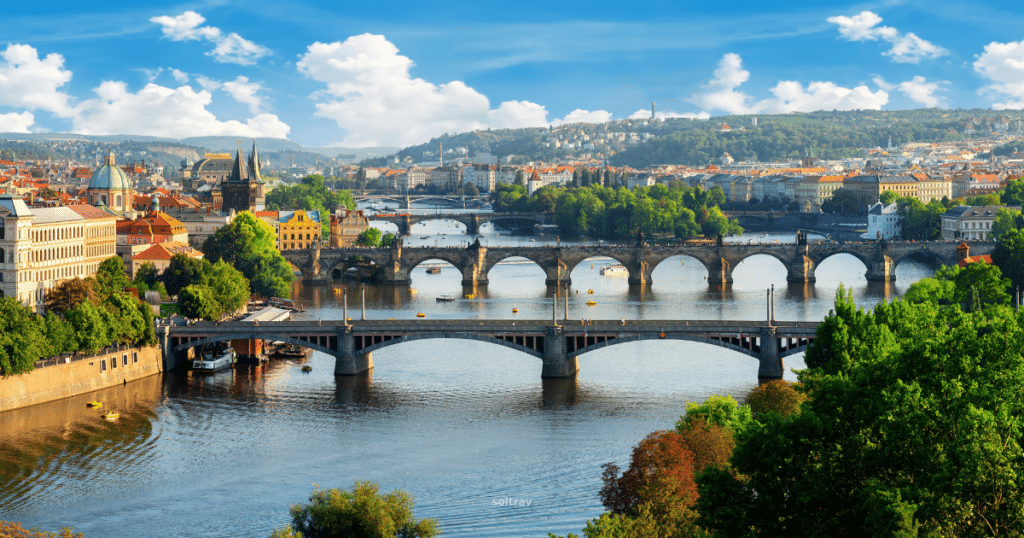
Prague’s skyline is dominated by the world’s largest ancient castle complex that spans an impressive 753,473 square feet. This UNESCO World Heritage site draws visitors with its mix of historical grandeur and hidden treasures.
The castle grounds hold remarkable finds beyond their famous facades. The Strahov Library ranks among the world’s most beautiful and gives visitors a glimpse into centuries of knowledge. You can explore the Golden Lane almost empty during early morning visits. The castle walls enclose a series of monuments, cathedrals, museums, and galleries that each show different viewpoints of Czech history.
The Czech people’s beer heritage runs deep, with an average consumption of 160 liters per person annually. The city’s pubs skip music and TV to promote real conversations. Local spots create their own unique brews and serve interesting flavor combinations among renowned names like Pilsner Urquel and Staropramen. Beer costs nowhere near as much as water in Prague’s establishments.
The historical city center offers countless photo spots, especially at sunrise and sunset. Charles Bridge stands as the most photogenic attraction and provides fantastic spots for night photography. Letná Park’s elevated viewpoints create postcard-perfect shots of the iconic bridges over the Vltava River. The Old Town Square shows off classical Prague’s architecture with curved, colorful houses best captured between sunrise and 9:30 AM.
Prague’s gardens provide peaceful retreats away from tourist crowds. The Wallenstein Garden has an artificial stalactite cave where peacocks roam free near a koi fish pond. The Vrtba Garden, a UNESCO-listed Baroque masterpiece, shows off stunning terraced layouts with fountains and sculptures. The Franciscan Garden’s intimate space includes hedgerows, roses, and a sculpted fountain that brings peace to the city’s heart.

Melbourne’s artistic heart beats through its colorful laneways. Art and culture blend seamlessly at every corner of this Australian metropolis that draws artists and culture lovers from around the world.
The city leads Australia’s first artist-led experience, giving visitors a chance to discover Melbourne’s hidden artistic gems. Professional artists lead groups through secret laneways filled with fresh murals, stencils, and mixed-media installations. Music fans flock to AC/DC Lane to see the massive tribute to Malcolm Young and a striking 3D sculpture of Bon Scott that seems to leap from the wall.
Melbourne earned its title as the world’s coffee capital after Italian immigrants brought their coffee traditions following World War II. Local independent cafes rule 95% of the market, leaving little room for big international chains. ST ALi, the life-blood of Melbourne’s coffee scene, brings innovation through ready-to-drink products while keeping its traditional cafe charm alive.
Each laneway tells its own unique story. Duckboard Place features Fintan Magee’s giant mural of a man carrying a tree. Manchester Press café welcomes visitors with its soaring ceilings and massive wooden tables in Rankins Lane. Loop Roof provides a green oasis with stunning city views and garden-inspired cocktails. Tucked away in Duckboard Place, Tonka restaurant serves refined Indian-fusion dishes.
Queen Victoria Market serves as Melbourne’s food hub with over 700 stalls spread across seven hectares. Weekend artists gather at the Rose Street Artists Market in Fitzroy to showcase their latest creations. Summer nights come alive at the Queen Victoria Night Market with delicious street food, music, and entertainment.
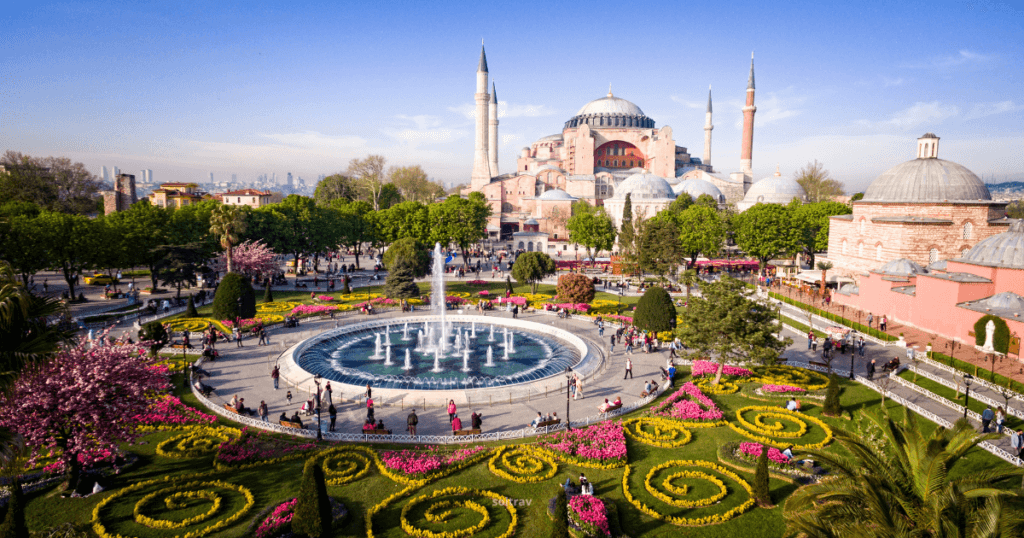
Istanbul straddles two continents along the legendary Bosphorus Strait. The city blends Eastern and Western influences naturally. This waterway runs approximately twenty miles and serves as an important international passage that defines the city’s character.
Luxury yacht cruises give visitors amazing views of iconic landmarks on both European and Asian shores. A two-hour boat trip shows off stunning coastal sights, beautiful mosques, palaces, and wooden villas. The waterway becomes magical at sunset when traditional boats move between continents. Visitors can enjoy Turkish tea while they take in the striking architecture of the Ortakoy Mosque.
The Grand Bazaar ranks among the world’s largest and oldest covered markets with over 4,000 shops spread across 61 covered streets. Between 250,000 and 400,000 people visit this historic marketplace each day. Craftspeople display their work in winding alleys under beautifully painted ceilings and sparkling stained-glass windows.
UNESCO has added Turkish tea culture to its Intangible Cultural Heritage list. This tradition symbolizes hospitality and friendship. The country makes about 1.2 million tons of tea yearly and accounts for nearly 10% of global tea consumption. Modern teahouses like Moda Aile Çay Bahçesi in Kadıköy provide stunning views of the Marmara Sea and Old City landmarks. Places like Munzer Tea House keep their authentic charm with backgammon games and classic Turkish tea service.
UNESCO designated Istanbul’s Historic Areas as World Heritage sites in 1985. These areas feature architectural wonders like the Hagia Sophia and Blue Mosque. Built between 1609 and 1616, the Blue Mosque displays intricate blue tiles and exceptional craftsmanship. The Hagia Sophia, built in 537, shows the brilliance of Byzantine architecture. These landmarks let visitors experience Istanbul’s rich cultural heritage where every stone tells a story of past empires.

A network of 165 canals weaves through Amsterdam’s historic heart. This stunning water system earned the city its UNESCO World Heritage status. The canals stretch 100 kilometers and connect more than 1,500 bridges.
Amsterdam’s iconic canal houses reflect the city’s Golden Age wealth. Built in the 17th century, these narrow townhouses doubled as homes and warehouses. Each house features a distinctive large hook mounted on the roof. Merchants used these hooks to lift goods from barges into attic storage spaces. Modern renovations have turned many houses into apartments while keeping their original character and design intact.
Amsterdam stands as Europe’s cycling capital with 847,000 bicycles serving its 442,693 households. The city shows its love for two-wheel transport with 400 kilometers of bike paths. Red markings separate these paths from roads and walkways. People from every social and economic background choose bikes as their main transport. The city’s small size and flat landscape make cycling an obvious choice.
Peaceful hofjes provide quiet retreats away from the busy canals. These historic courtyards started as homes for elderly women. About 30 of these calm spaces still exist within the UNESCO canal belt. The Jordaan district holds the most hofjes, with almost twenty beautiful courtyards. The Begijnhof stands out as one of Amsterdam’s oldest hofjes, dating back to the 14th century.
The Albert Cuyp Market rules as the Netherlands’ biggest outdoor marketplace. You’ll find it open six days a week in the lively De Pijp district. Europe’s largest flea market, the IJ-Hallen, takes over NDSM Werf once a month. It’s a perfect spot for treasure hunters. The Noordermarkt brings fresh local produce every Saturday, where farmers showcase their best goods.
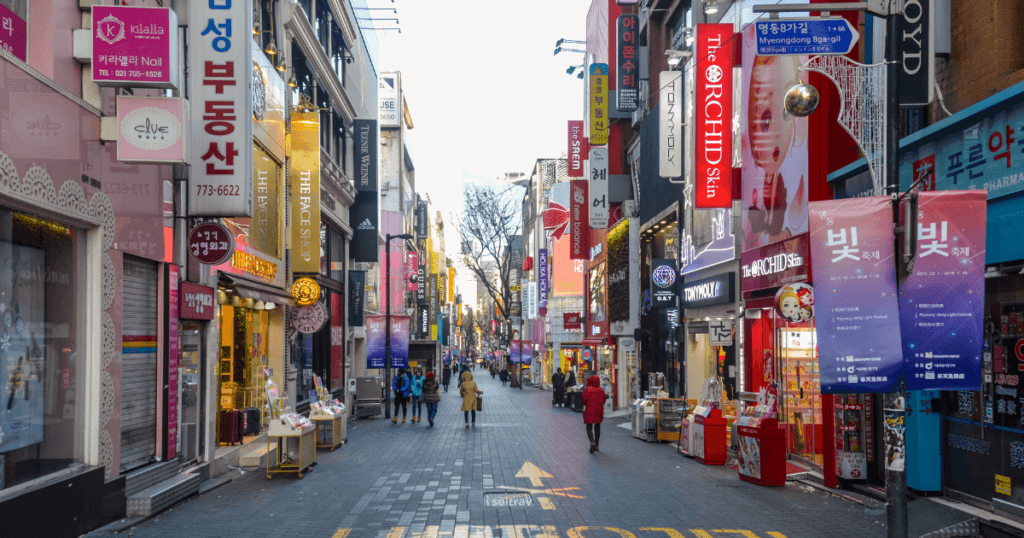
Seoul fascinates visitors with its perfect mix of ancient temples and modern achievements. This bustling city shows South Korea’s remarkable growth from its historical beginnings to its technological success.
The Templestay program lets visitors dive deep into Korean Buddhist traditions. Participants wear temple uniforms and take part in age-old practices. Monks lead tours to share their temple’s history and daily rituals. The experience includes tea ceremonies that create meaningful connections. Bongeunsa Temple, right in Seoul’s center, runs programs from 2 PM Saturday to 11 AM Sunday at 120,000 Won per person.
Seoul leads the global beauty scene, with cosmetics exports now bigger than smartphone shipments. The city has over 8,000 beauty brands that keep learning about new ingredients from mugwort to bee propolis. Korean beauty traditions focus on integrated skincare methods that blend natural ingredients with scientific progress.
The city becomes a food lover’s paradise with its vast network of street vendors. Myeongdong district serves creative new treats next to classic favorites. Tteokbokki (spicy rice cakes) remains Korea’s favorite street food. Places like Sindang-dong Tteokbokki Town have kept their original recipes since the 1970s. Gwangjang Market serves traditional treats like gimbap (seaweed rice rolls) and mandu (dumplings).
Seoul’s skyline shows its tech power through bold designs. Zaha Hadid’s Dongdaemun Design Plaza proves the city’s architectural dreams. The Lotte World Tower and Seoul New City Hall naturally blend eco-friendly features with state-of-the-art design. Smart city projects and automated stores make Seoul one of the world’s most advanced cities.
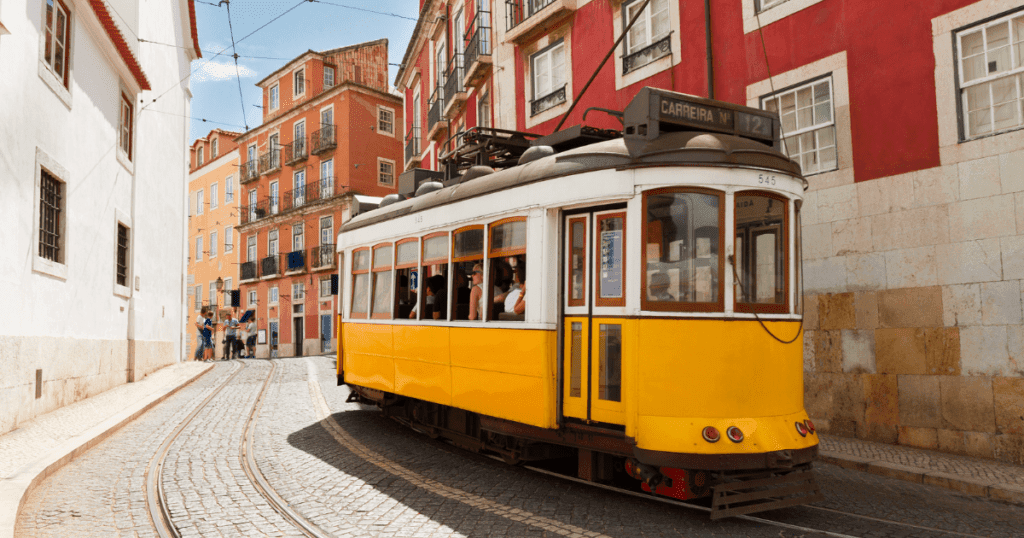
Lisbon, a city spread over seven majestic hills, captivates visitors with its historic trams, soulful music, and panoramic vistas. The Portuguese capital’s unique geography creates an extraordinary cityscape that draws travelers looking for genuine experiences.
The iconic yellow Tram 28 serves as a living museum that winds through Lisbon’s most distinctive neighborhoods. This historic route shows glimpses of city life, from locals sipping coffee at snack quiosques to second-hand bookshops hidden in quiet corners. Skilled drivers control the tram with a single lever and floor pedal as they guide it through streets too narrow for modern vehicles. The best time to board is early morning at Praça Martim Moniz, when midweek rides typically have more locals than tourists.
Fado music echoes through ancient walls in Alfama’s narrow cobblestone streets. This UNESCO-recognized musical tradition began in Lisbon’s poorest quarters and expresses life’s deepest emotions through haunting melodies. The music blends various influences yet keeps its distinctive character through performances in intimate venues. Traditional fado houses emerged in Bairro Alto during the 1930s and continue to preserve this cultural heritage.
Each of Lisbon’s seven hills shows a different side of the city. Miradouro de São Pedro de Alcântara provides exceptional views of Alfama and the Castle, with an azulejo-tiled map highlighting major landmarks. The Portas do Sol viewpoint reveals stunning vistas of the Tagus River and S. Vicente Monastery at sunset. Traditional kiosks serve refreshments at these elevated spots, creating perfect settings to experience Lisbon’s unique light.
Lisbon’s wine culture thrives through distinctive tasting venues. The region features many historic quintas (wine estates) where centuries-old traditions come alive. Notable places like Quinta da Boa Esperança pair premium tastings with local gourmet produce. Wine enthusiasts can learn Portuguese winemaking’s intricacies through guided tours that end with carefully selected vintage tastings.

Copenhagen stands out as a leader in environmentally responsible urban development. The Danish capital has earned its place among the world’s most liveable cities through creative design, rich culture, and green initiatives.
Copenhagen transforms into a creative paradise each June during the annual design festival, 3daysofdesign. The festival showcases innovative concepts in lifestyle, furniture, and interior design. Visitors can explore showrooms and galleries throughout the city’s design-focused neighborhoods that showcase both classic and contemporary Danish esthetics. The Royal Radisson, the world’s first design hotel, shows off functionalistic architecture with its unique interior created by renowned architect Arne Jacobsen.
Danish lifestyle’s life-blood is hygge (pronounced “hoo-gah”), an 18th-century concept that captures comfort and contentment. This cultural essence comes alive through candlelit gatherings, cozy conversations, and shared moments of simple pleasure. Hygge becomes most important during winter when Danes curb long, dark days with millions of candles and intimate social gatherings.
Copenhagen’s steadfast dedication to environmental responsibility shines through many initiatives. The city wants to become the world’s first carbon-neutral metropolis by 2025. Over 98% of households connect to centralized heating systems. City leaders work together with researchers through Project Air View to monitor and improve air quality. The city has installed 22,000 smart streetlights, which reduced lighting costs by 76%.
Copenhagen’s food scene has revolutionized the Nordic region, with more Michelin stars than any other Nordic city. Danes lead the world in organic food consumption – three out of four buy organic products weekly. Local restaurants prioritize plant-based options and sustainable produce, along with natural wines and sourdough bakeries. Independent cafes control 95% of the market and offer authentic Danish experiences instead of international chains.
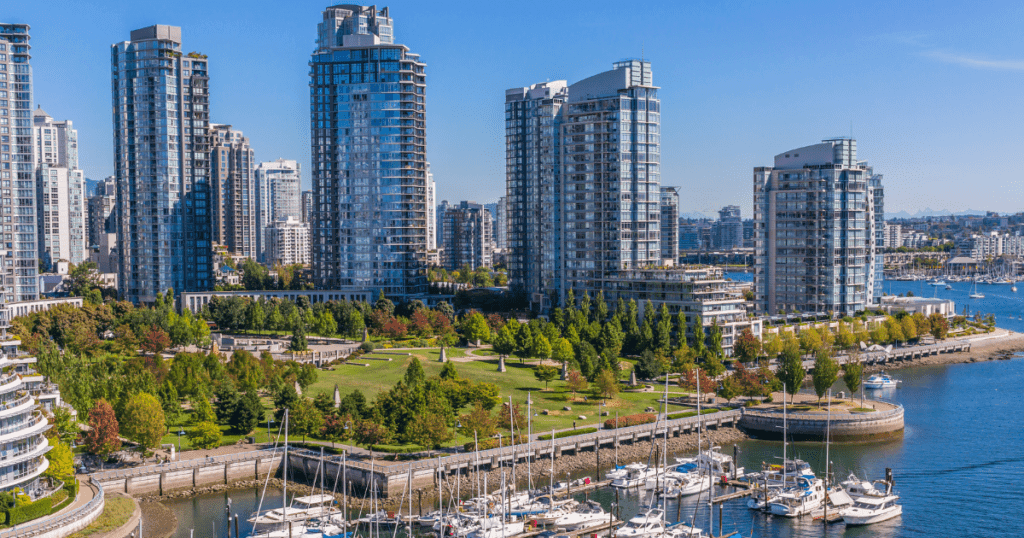
Vancouver emerges as a natural wonderland where wilderness meets urban sophistication, nestled between towering mountains and the Pacific Ocean. The coastal city enjoys mild temperatures year-round, ranging from 7°C in winter to 22°C in summer, making it perfect for outdoor adventures.
Vancouver’s crown jewel, Stanley Park, covers nearly 1,000 acres of lush greenery. Visitors can find hidden treasures like Beaver Lake with its beautiful lily pads while exploring the extensive trail network. The park’s seawall winds almost 20 miles along Vancouver’s waterfront and offers stunning views of English Bay and the city skyline.
Vancouver stands as a multicultural hub with a population that reflects a rich mixture of backgrounds. The 2016 census revealed a diverse ethnic composition: 49.3% European, 32.1% South Asian, and 20% East and Southeast Asian origins. Each vibrant neighborhood adds its unique art, architecture, and culinary traditions to the city’s identity.
The city’s natural setting creates unmatched opportunities for year-round adventure. Three local mountains provide world-class skiing just 20 minutes from downtown during winter months. Nature enthusiasts can observe remarkable wildlife in the region’s diverse ecosystem, while scuba diving fans explore shore-accessed sites and shipwreck circuits. Ten mountain ranges offer countless trails for hiking enthusiasts, including the challenging Berg Lake Trail.
Vancouver Farmers Markets bring together local producers, artisans, and food creators in neighborhoods of all sizes. These markets operate throughout the week from spring through fall. The vibrant community spaces support local food production and serve as meeting points for visitors to connect with farmers, fish harvesters, and artisans. Fresh produce and unique food products showcase Vancouver’s culinary diversity, while the markets emphasize accessibility.
These 15 remarkable cities showcase human creativity, rich culture, and natural beauty. Each place tells its own story – from the hidden art quarters of Paris to Kyoto’s ancient temples, Cape Town’s buzzing art scene to Venice’s timeless canals.
The real character of these cities comes alive through their food tours, traditional crafts, and deep cultural roots. Melbourne’s laneways burst with street art while Copenhagen leads the way in environmentally responsible city living. Seoul perfectly blends old wisdom with new technology. Istanbul connects two continents through its famous bazaars and cozy tea houses.
Nature takes center stage in these urban settings. Vancouver’s mountains touch the sea and Edinburgh’s castle sits proudly on an extinct volcano. Amsterdam’s waterways weave an enchanting maze while San Francisco’s hills reveal stunning views of the Golden Gate Bridge.
Your travel dreams are within reach. Don’t see these places as just items on a distant bucket list – they’re adventures waiting to happen. Their lasting appeal, hidden gems, and local flavor create the perfect backdrop for meaningful experiences that stick with you long after your trip ends.
Q1. Which city is considered the most beautiful in the world for 2025? Beauty is subjective, but cities like Paris, Cape Town, and Venice consistently rank highly for their stunning architecture, natural landscapes, and cultural richness. Each offers unique charms, from Paris’s romantic ambiance to Cape Town’s blend of mountains and sea.
Q2. What makes a city one of the best places to live in 2025? The best cities to live in typically offer a high quality of life, combining factors like economic opportunities, cultural amenities, green spaces, and efficient public services. Cities like Copenhagen and Vancouver stand out for their focus on sustainability, livability, and work-life balance.
Q3. How do locals’ perspectives influence a city’s beauty ranking? Local perspectives are crucial in determining a city’s true beauty. They often highlight hidden gems, authentic experiences, and the city’s real character beyond tourist hotspots. For instance, locals in cities like Melbourne and Istanbul can guide visitors to vibrant street art scenes or traditional tea houses that may not be in guidebooks.
Q4. Which cities are expected to be the most visited in 2025? While exact predictions can vary, cities like Paris, London, and Bangkok consistently attract millions of visitors annually. Emerging destinations like Dubai and Singapore are also gaining popularity due to their modern attractions and strategic locations.
Q5. How are cities adapting to become more attractive to visitors in 2025? Cities are focusing on sustainable tourism, enhancing cultural experiences, and improving infrastructure. For example, Amsterdam is managing overtourism through innovative policies, while Seoul blends cutting-edge technology with traditional experiences to attract diverse visitors.
[1] – https://www.australia.com/en-us/places/melbourne-and-surrounds/best-markets.html
[2] – https://parisjetaime.com/eng/article/10-unusual-districts-to-explore-in-paris-a841
[3] – https://www.barcelona-tourist-guide.com/en/tour/tapas-walking-tour.html
[4] – https://www.sftravel.com/neighborhoods
[5] – https://www.primepropertyturkey.com/blog/tea-route-istanbul
[6] – https://vancouverbc.com/the-diverse-cultures-of-vancouver/
[7] – https://www.johnnyspraguetours.com/best-prague-photo-spots/
[8] – https://www.visitscotland.com/things-to-do/events/edinburgh-festivals
[9] – https://www.edinburghfestivalcity.com/
[10] – https://www.artisansofleisure.com/luxury-travel-blog/2024/07/templestay-memorable-buddhist-temple-travel-experiences-in-south-korea/
[11] – https://www.the500hiddensecrets.com/czech-republic/prague/discover/public-gardens
[12] – https://theculturetrip.com/europe/netherlands/articles/a-brief-history-of-amsterdams-narrow-canal-houses
[13] – https://en.wikipedia.org/wiki/Cycling_in_Amsterdam
[14] – https://kimcollective.com/venice/
[15] – https://storiesmysuitcasecouldtell.com/2023/06/07/lisbon-tram-28/
[16] – https://www.winetourism.com/wine-tasting-tours-in-lisbon/
[17] – https://www.theurbanist.org/2024/02/23/how-copenhagen-is-leading-the-world-in-sustainability/
[18] – https://travel.usnews.com/Vancouver_Canada/Things_To_Do/
[19] – https://edinburghtourist.co.uk/attractions/edinburgh-castle/
[20] – https://www.planetware.com/edinburgh/edinburgh-castle-sco-loth-castle.htm
[21] – https://www.edinburghmuseums.org.uk/venue/writers-museum
[22] – https://edinburgh.org/inspire/edinburgh-city-guides/literature/
[23] – https://edinburgh.org/blog/edinburghs-oldest-bars-and-pubs/
[24] – https://apassionandapassport.com/hidden-gems-in-san-francisco/
[25] – https://www.sftravel.com/eat-drink
[26] – https://sf.eater.com/23187099/san-francisco-dining-guide
[27] – https://www.architecturalrecord.com/articles/16293-the-architects-guide-to-san-francisco
[28] – https://sanfran.com/san-francisco-neighborhood-guide
[29] – https://www.archdaily.com/877599/10-must-see-gaudi-buildings-in-barcelona
[30] – https://www.barcelona-tourist-guide.com/en/gaudi/barcelona-gaudi.html
[31] – https://www.barcelona.cat/en/what-to-do-in-bcn/bathing-and-beaches/history-beaches
[32] – https://www.barcelonaturisme.com/wv3/en/page/1770/sea-and-beaches.html
[33] – https://spanishsabores.com/self-guided-tapas-tour-barcelona/
[34] – https://www.thewanderinglens.com/best-photography-locations-prague/
[35] – https://www.radio.cz/en/static/czech-beer/culture
[36] – https://www.tasteofprague.com/pragueblog/prague-beer-guide-all-you-need-to-know-about-beer-in-prague
[37] – https://www.airserbia.com/A-Guide-to-Prague-Must-see-Tourist-Attractions-in-the-Golden-City-Air-Serbia~4557
[38] – https://bestregardsfromfar.com/2022/06/28/czech-beer-culture-in-authentic-and-unusual-experiences-prague/
[39] – https://www.flytographer.com/blog/best-places-to-take-photos-prague/
[40] – https://www.giyou.cz/en/blog/11-most-beautiful-gardens-prague-giyou-garden?srsltid=AfmBOoqRrCqh-WvnWOiI-YO2VQ5oX30eRAzjftqjsLf8MkjAGzhr1QzR
[41] – https://melbournestreettours.com/
[42] – https://whatson.melbourne.vic.gov.au/things-to-do/walks/street-art
[43] – https://www.visitmelbourne.com/regions/melbourne/eat-and-drink/why-is-melbourne-coffee-so-good
[44] – https://en.wikipedia.org/wiki/Coffee_culture_in_Australia
[45] – https://www.australia.com/en/places/melbourne-and-surrounds/best-laneway-secrets.html
[46] – https://whatson.melbourne.vic.gov.au/article/the-ultimate-guide-to-melbournes-best-markets
[47] – https://www.tripadvisor.com/Attraction_Review-g293974-d1657485-Reviews-Bosphorus_Strait-Istanbul.html
[48] – https://www.bosphorustour.com/
[49] – https://www.getyourguide.com/istanbul-l56/istanbul-bosphorus-and-golden-horn-tour-with-drinks-t434028/
[50] – https://en.wikipedia.org/wiki/Grand_Bazaar,_Istanbul
[51] – https://www.lonelyplanet.com/articles/guide-to-istanbul-grand-bazaar
[52] – https://www.forbes.com/sites/kaitlynmcinnis/2024/06/13/5-of-the-best-modern-teahouses-in-kadikoy-istanbul/
[53] – https://en.wikipedia.org/wiki/Historic_Areas_of_Istanbul
[54] – https://www.forbes.com/sites/joanneshurvell/2022/04/30/where-east-meets-west-best-of-istanbul-turkey/
[55] – https://vocal.media/lifehack/exploring-amsterdam-a-traveler-s-guide-to-the-venice-of-the-north
[56] – https://blogs.valpo.edu/studyabroad/2010/10/11/amsterdam-more-than-just-the-venice-of-the-north/
[57] – https://www.probuilder.com/design/article/55215521/the-amsterdam-canal-houses-300-years-old-and-still-standing
[58] – https://www.solosophie.com/hofjes-in-amsterdam/
[59] – https://www.intltravelnews.com/2013/08/hidden-hofjes-amsterdam.html
[60] – https://www.hotels.com/go/netherlands/nl-best-markets-amsterdam
[61] – https://www.amsterdam.info/markets/
[62] – https://www.deborahinkorea.com/blog/my-complete-guide-to-the-bongeunsa-templestay-experience
[63] – https://www.fastcompany.com/90909571/flawless-lessons-from-k-beauty
[64] – https://beigic-global.com/blogs/blog/the-cultural-history-of-korean-beauty-cosmetics
[65] – https://theculturetrip.com/asia/south-korea/seoul/articles/the-best-places-to-try-street-food-in-seoul
[66] – https://migrationology.com/korean-street-food-seoul-guide/
[67] – https://www.archdaily.com/987186/seoul-city-guide-30-projects-to-see-in-the-heart-of-south-korea
[68] – https://theculturetrip.com/asia/south-korea/articles/get-your-geek-on-at-these-south-korean-tech-attractions
[69] – https://www.visitlisboa.com/en/lisbon-stories/1-fado-route
[70] – https://press.fourseasons.com/lisbon/trending-now/top-7-views
[71] – https://www.3daysofdesign.dk/design-walks
[72] – https://cphcool.dk/tours/guided-tour-about-danish-design/
[73] – https://www.visitdenmark.com/denmark/things-do/danish-culture/what-hygge
[74] – https://www.spur.org/news/2022-08-31/sustainable-city-learning-copenhagens-plan-zero-carbon
[75] – https://www.wonderfulcopenhagen.com/wonderful-copenhagen/international-press/gastronomy-copenhagen
[76] – https://www.visitdenmark.com/denmark/things-do/danish-food/where-eat-copenhagen
[77] – https://www.destinationvancouver.com/inspiration/adventure
[78] – https://www.hellobc.com/things-to-do/adventure-outdoors/
[79] – https://vancouver.ca/people-programs/markets.aspx
[80] – https://parisjetaime.com/eng/media/article/sustainable-paris-a1134
[81] – https://www.cntraveler.com/gallery/best-food-tours-in-paris
[82] – https://www.thewanderinglens.com/the-paris-edition-your-guide-to-the-best-photography-locations/
[83] – https://www.pixeoapp.com/photography-guides/best-photo-spots-in-paris/
[84] – https://www.hoteldesgrandsvoyageurs.com/news/articles/eco-friendly-travel-how-hotel-des-grands-voyageurs-promotes-sustainable-tourism-in-paris-59710
[85] – https://www.agoda.com/travel-guides/japan/kyoto/kyotos-spiritual-essence-a-journey-through-its-ancient-temples-and-shrines/
[86] – https://www.neverendingvoyage.com/things-to-do-in-kyoto-japan/
[87] – https://www.insidekyoto.com/kyoto-tea-ceremony
[88] – https://www.byfood.com/blog/kyoto/kyoto-tea-ceremony
[89] – https://www.japan-guide.com/e/e3951.html
[90] – https://www.japan.travel/en/ph/special-features/kyoto-cherry-blossom/
[91] – https://www.kyotoartisans.jp/en
[92] – https://traditionalkyoto.com/activities/time-with-artisans/
[93] – https://www.cntraveler.com/story/kyoto-things-to-do-crafts-scene
[94] – https://www.capetown.travel/things-to-do/nature/
[95] – https://tablemountain.net/come-explore
[96] – https://www.capetownculinarytours.com/
[97] – https://thecapetownblog.com/best-beaches/
[98] – https://www.andbeyond.com/experiences/africa/south-africa/cape-town/explore-the-beaches-of-cape-town/
[99] – https://www.afar.com/magazine/for-an-intimate-look-at-south-africas-booming-art-scene-head-to-the-townships
[100] – https://www.healthylivingandtravel.com/take-a-tour-of-south-africas-contemporary-art-scene/
[101] – https://www.nannybag.com/en/guides/venice/venice-hidden-gems-lesser-known-canals-and-squares-to-visit
[102] – https://bonjourvenise.fr/en/hidden-bridges-of-venice/
[103] – http://www.visitvenezia.eu/en/venetianity/discover-venice/10-hidden-views-in-venice
[104] – https://www.eatingeurope.com/blog/essential-food-venice/
[105] – https://www.eataly.com/us_en/magazine/culture-and-tradition/food-guide-veneto
[106] – https://www.italianbark.com/made-italy-venice-artisans-best-venetian-handcrafted-items/
[107] – https://www.theplaceofwonders.org/en/project-for-venice-makers
[108] – https://www.bbc.com/travel/article/20240203-a-local-photographers-expert-tips-for-getting-the-best-photos-in-venice
[109] – https://www.thewanderinglens.com/venice-edition-photography-location-scout/